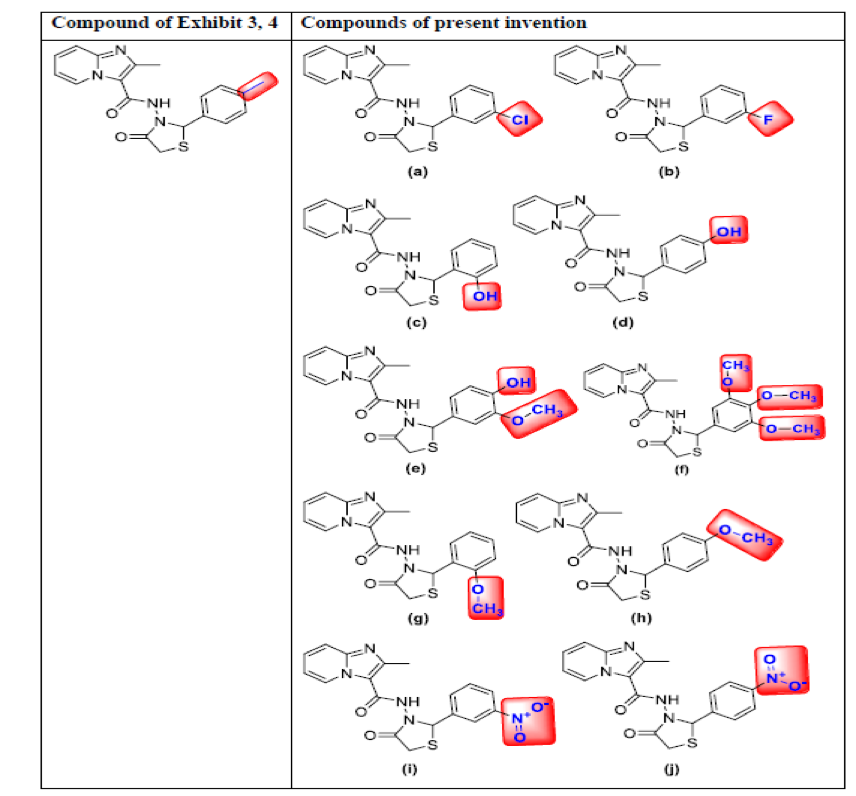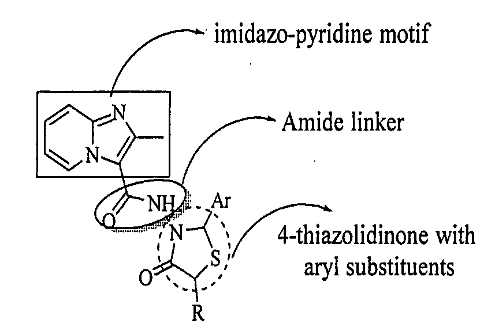Ideally, it is the responsibility of the Patent Office to check that every applicant wishing to obtain a patent registration is complying with the mandated rules and procedural formalities, and in case there are any lapses, the office must take appropriate measures. However, a recent case raises alarming questions regarding how these checks are carried out. In a case with seemingly overlooked delayed filings by the Applicant, a patent application was abruptly transferred from one officer to another, ignoring a subsisting notice of opposition. Discussing the background of the case in this guest post, Suriya Balakanthan, highlights how these procedural lapses took place and highlights the impact that this case can have on the patent prosecution setup. Suriya is a Patent Analyst from Salem Tamil Nadu. The views expressed at those of the author’s alone.

Glaring Procedural Questions Arising Out of a Recent Patent Prosecution Proceeding
By Suriya Balakanthan
An invention titled “THIAZOLIDIN-3-YL-IMIDAZO-PYRIDINE-3-CARBOXAMIDE AS ANTIMALARIAL AGENTS” bearing Patent Application No. 202221034803 was filed on 17/06/2022 by Maharaja Krishnakumarsinhji Bhavnagar University (Applicant) from Gujarat. The examination report (FER) was issued on 29/08/2022 by the Deputy Controller of Patents & Designs from Kolkata Patent Office (the first Officer) and the reply was filed on 17/11/2022. Thereafter, a pre-grant opposition was filed on 09/01/2023 by Mr. T. Iyer (first Opponent) from Madurai, Tamil Nadu.
The Curious Case of Two Notices of Opposition by Two Officers
On 30/01/2023 a notice of opposition was issued by the first Officer which ought to have been replied by the Applicant within 3 months as per Rule 55(4) of Indian Patent Act 1970. Surprisingly another notice of opposition was issued on 24/03/2023 by another Deputy Controller of Patents & Designs from Mumbai Patent Office (second Officer) without stating the reason as to why the first notice of opposition (dated 30/01/2023) cannot be taken on record. As per the practice of the Indian Patent Office, the Controllers send the notification in the form of an e-mail along with a physical copy of the notice. Here, the 1st Officer communicated the notice of opposition to the applicant and opponent on 30/01/2023 via an e-mail only which was not uploaded by the Indian Patent Office, while the 2nd Officer communicated the notification via an e-mail along with a physical copy under the letter head of the Indian Patent Office on 24/03/2023 which is uploaded in the module (see here (pdf) for the interlocutory petition via affidavit dated 10/06/2023 filed by 1st Opponent showing the email dated 30/01/2023 and here (pdf) for the notice of opposition by the 2nd Officer).
Regarding the issue of transfer of the case from one officer to another, the Officer who disposed of the application (i.e., Second Officer) mentioned in his decision (pdf) that-
“The transfer of case from one Controller to the other is done as per the provision under Section 73(4) of the Patents Act by the Controller of Patents and the opponent before the outcome of his pre-grant opposition has taken a narrow view of it. However, the contention of the opponent was noted, without rescheduling the hearing fixed on 15/06/2023, the argument of the opponent was supposed to be discussed in the hearing. For this issue there required no reason the same should have been passed to the applicant for a reply. Neither, the opponent appeared for the hearing nor any intimation was given to the Controller that they are not attending the hearing. The move of the opponent not to appear for hearing without citing any reason thereof appears to be an attempt to delay the proceedings. As per the scheme hearing was conducted as scheduled.”
However, the Controller has erred in its above findings as regardless the Opponent’s appearance in the hearing, the Controller ought to have considered the fact that there are two notices of opposition subsisting for the same pre-grant opposition. Therefore, instead of holding the Opponent liable for the delay, the Controller should have considered whether the reply filed by the Applicant in light of the two subsisting notices was filed within the deadline or not.
Such a finding is also crucial since the Applicant filed a response to the notice by the second Officer dt. (24/03/2023) , on the same day of its issuance. Those familiar with the nitty gritty of patent prosecution would know that it is quite improbable to go through the representation critically, prepare the argument, and file the reply statement on the same day. Thus, this leads to one question i.e. whether the Applicant is aware of the notice of opposition in advance? And if so, shouldn’t the deadline under Rule 55 be calculated from the date of the first notice of opposition?
Delayed Filing of Written Submission
A hearing was scheduled on 15/06/2023 by the second Officer without considering and disposal of the interlocutory petition filed by the first Opponent. Why the interlocutory petition was disregarded has not been discussed in the decision. The Applicant attended the hearing as scheduled and uploaded its written submission on 22/07/2023. However, as per Rule 28(7) of the Patent Rules written submissions and the relevant documents, should be filed within 15 days (irrespective of the mode of filling i.e. online or physical) from the date of Hearing. As stated above, the date of hearing is 15/06/2023 and the date of written submission as uploaded on the portal is 22/07/2023 i.e. beyond the deadline of 15 days. As far as the e-module vis-a-vis patent prosecution process is concerned, the date of uploading any document on the Patent Office portal is regarded as the date of filing of that document. Some of the readers may think that it is possible that the response would have been filed via a hard copy which could have been later uploaded by the Patent Office. But that is not the case here because if any document is filed physically then the IPO states a date and time at the bottom part of that document like the below:

(Please see the document (pdf) which was filed physically and uploaded on 28/08/2023). But, the written submission by the Applicant has no such marks clearly establishing that the document was directly uploaded by them after the timeline of 15 days. Furthermore, the Applicant has mentioned the date 24/06/2023 on the covering letter but the same is ‘filed’ on 22/07/2023 i.e. after the 15 days deadline.
It is also highly surprising that usually if the documents are not filed within the scheduled time period (i.e. within 15 days) then the e-module/ portal (The Patent Office) generally doesn’t accept the document at a later date. However, in the present case, the Patent Office has accepted the delayed filing of this document without any request for an extension being filed by the Applicant.
Substantial Issues with the Application
Another pre-grant opposition was filed on 10/07/2023 by Omprakash Singh Barkhamba from Meerut, Uttar Pradesh (second Opponent) raising the voice regarding link between the Indian Patent Office including Controller General of Patents, Designs & Trademarks and the Gujarat based Applicant/inventor beside other technical objections including novelty and inventive step of the invention.
The second opponent also mentioned in Page No. 9-10 of the representation that “since the Applicant himself has admitted that the compound (Formula I) of the impugned application is an effect of inspiration/motivation of Formula 2-6, the alleged invention is obvious and is liable to be refused on this ground alone”.
Upon receipt of the representation filed by the second opponent, the notice of opposition was issued on 14/09/2023 by the second Officer and the Applicant filed the reply to the representation on 28/09/2023 but did not counter the opponent’s above contention. On 09/10/2023, the second Officer issued a Hearing notice which was scheduled on 08/11/2023. The written submission was filed by the Applicant on 21/11/2023 explaining the novelty & inventive step of the opposed invention as follows:

For the point of motivation as raised by the second opponent, the Controller (second Officer) mentioned in the order that the same “does not hold good.” And held that the Controller could have been given enough evidence. However, it must be noted that once the Applicant has admitted that- 1) it has taken inspiration from the prior art;
2) the claimed compound is a combined moiety of imidazole-pyridine and quinoline based 4-thiazolidinones for anti-malarial activity.
3) And the Applicant is failed to counter the same in their reply statement and the written submission then it is unclear why the Controller needs enough evidence for a self-admitted fact.
Further, in order to ‘differentiate’ the invention the Applicant is saying [after citing the document (left column as above) that the invention lies on the aryl substitution now (as highlighted in right column as above) whereas the as filed specification (3rd para, Page No. 11, Detailed Description of the Invention) says:

Page No. 9, Fig. 2, Detailed Description of the Invention states:

Now it is to be noted that the Applicant himself says in the background part that they are inspired because imidazole-pyridine moiety and 4-thiazolidinone are good members for malaria. The claimed formula (as above) clearly says that it is a combination of imidazo-pyridine moiety and 4-thiazolidinone. If there is any inventive concept of insertion of the thiazolidinone moiety at 3rd position of imidazole-pyridine ring through an amide linker then there must be some shortcomings in other position (like 2nd, 4th…..). However, no such teaching/discussion is made in the specification. Those familiar with the field would know that the position of the insertion does not matter rather what matters is the combination of the moieties.
Now, let me explain how the claimed formula clearly attracts novelty & inventive objection & section 3(d) in view of Exhibit 3 of Opponent II:
The Applicant states that the ‘invention’ lies in the combination of imidazole-pyridine moiety and 4-thiazolidinone for malaria. But the specification does. Not specify how “aryl substituent” (as above red highlighted) can be regarded as an inventive step.
Such a clarification is necessary since except aryl substitution the compound is structurally same (this has also been accepted by the Applicant as discussed above) and incorporation of aryl substitution will be obvious for a person skilled in the art. Furthermore, it is pertinent to note that this clarification about aryl substitution was made in the written statement and not in the response to the FER.
Thus, it appears that the Applicant is being caught now and is trying to get this patent stating this mere difference (aryl substitution) and the Indian Patent Office ‘considered’ the Applicant’s point then what we will say to other applicants/inventors.
Conclusion
From the above picture, one question appeared in my mind: procedurally, if the Indian Patent Office overlooks the time bar today then anybody who misses any deadline will come tomorrow and ask for the allowance stating this case as an example thereby affecting the whole patent system in our country. Furthermore, if this kind of invention is allowed by the Indian Patent Office today then tomorrow anyone can ask for a patent using this kind of substitution, citing this case as a precedence. Then what is the value of Section 2(1)(j) vis-a-vis Section 3(d) interpretation [ever greening] in our country? On the one hand, the whole world knows that India is perhaps the toughest jurisdiction for getting a compound patent [because of Section 3(d)] and on the other hand, this kind of compound case has been granted by the same Office to the applicant now which leads a serious question on the countries reputation.
- SEO Powered Content & PR Distribution. Get Amplified Today.
- PlatoData.Network Vertical Generative Ai. Empower Yourself. Access Here.
- PlatoAiStream. Web3 Intelligence. Knowledge Amplified. Access Here.
- PlatoESG. Carbon, CleanTech, Energy, Environment, Solar, Waste Management. Access Here.
- PlatoHealth. Biotech and Clinical Trials Intelligence. Access Here.
- Source: https://spicyip.com/2024/01/glaring-procedural-problems-arising-out-of-a-recent-patent-prosecution-proceeding.html



